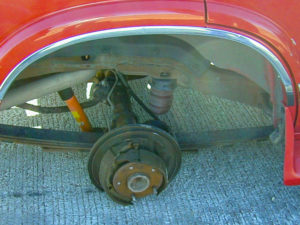So, this is journal number 150 and I’m wondering if Siena is a nice place to visit. We’d have spent last night there and be walking down the last eleven days to Rome if not for the pandemic. Our plan had us continuing along the Via Francigena, reaching Ponte d’Arbia tonight where we’d planned to rest for our weekly day off. I think we’d have stayed a second night in Siena instead. I’ll try to remember this for next year, assuming waves of pandemic and panic won’t prevent us trekking from Manchester to Rome in 2021.
There’s a letter regarding life insurance on the counter this morning. It includes a Covid alert that seems strangely inappropriate on a renewal notice.

It got me thinking about life expectancy. I recalled that life expectancy studies confirmed that people who take out life insurance while their parents are still alive live longer than those who buy insurance after their parents are deceased. Should I be advising our children to increase their life expectancy by buying insurance now before it’s too late?
Actuarial details like this fascinate me. It turns out that insurers know that people whose ancestors are long-lived are more likely to live longer than those whose ancestors died young. You guess that too. Except that you haven’t proved it. Actuaries long ago statistically proved that statistical life expectancy is statistically inherited.
Their interest is risk mitigation and managing on probabilities is good for insurance purposes.
I ask myself, how do they know? How do we know anything?
I mean, more people have lived and died without records than have ever been documented. How many centurions have died without knowledge let alone record of their age? There are biases because of the lack of records.
Even with records, we can be misdirected by our limited observation and experience. I was looking at a mushroom while we were out walking the dog yesterday. I wondered how long it lives. A few days perhaps. Then I wondered how it got to be there in the first place. And I recalled that the mushroom root fungus of mycelium filaments in the soil below can live years, even hundreds of years. So how old is the mushroom?
We don’t ask the age of the panicles or as some call them, the candles on a horse-chestnut tree. We date such trees by their annual growth rings. We know the candles are transient and that chestnut can live hundreds of years.
Except that not all trees develop the rings we use for the annual growth. The California Bristlecone was said to the the oldest living tree, perhaps 4,500 years old. Tropical trees have continuous growth which makes age assessment more problematic and will involve carbon isotope dating for certainty. Arctic trees have erratic growth patterns and their growth rings can be very hard to count. Carbon-14 dating root systems works well. Now I hear there’s a Norway spruce called Old Tjikko that’s 9,550 years and thriving in the Fulufjället Mountains in Sweden.
If you went to Fishlake National Forest in Utah to look at quaking aspens, as you might, you’d doubtless see Pando, aka the ‘trembling giant’. Except you’d probably be there to photograph the autumn colours without knowing which one was Pando.
Unless someone told you, and it’s a tourist attraction so someone would have offered to tell all for a few dollars. Otherwise, you’d not know that all 40,000 trees in front of you was really just one.
A so-called clonal colony that’s probably 80,000 years old.
I think that life expectancy can be quite subjective.
Brief Encounter
I took a trip to Utah in 2002, a few years before Pando was announced. My visit was a week or two early for the splendid show of colours that the aspens put on every year. Instead, I was taken trout fishing on a Saturday afternoon. I went with a colleague and a few people we knew who were attending the same convention in Salt Lake City. Of course, one of them had a friend who lived locally and had a favourite fly fishing spot. It’s America so we rented the gear. Poles, reels, wader-suits and all you’d need to instantly become a relaxed back-woods trophy trout fisherman. I think I was the only one who didn’t hook anything but it was a lot of fun trying.
Relaxed, I was the third to climb into the rear of the SUV for the return journey to the city. I ended up sitting over the rear wheel arch, looking out at snowless ski slopes and generally enjoying the emerging-tree-coloured views and the chat during drive. We were on a divided highway doing seventy miles an hour when I thought I saw a rabbit jump out from under our car. It seemed that I saw its twin in my peripheral vision, breaking left and crossing the central reservation. The right rabbit crossed the hard shoulder, jumped a fence and headed off down a steep embankment raised to carry that portion of the highway across mildly undulating terrain. The vehicle rocked slightly, we slowed rapidly and there were a lot of sparks as we pulled over onto the hard shoulder.
The rabbit was a wheel. Its twin was the brake drum. All that was left under my seat were the brake shoes on the axle. And somehow we were unharmed. Our friends’ friend hadn’t panicked and had managed to steer a three wheeled car carrying over 400 kilos of people to a safe stop from 70 mph despite a catastrophic wheel loss.

Shortly afterwards, a car came up behind us as we stood around wondering what to do next. We had no mobile signal and were five men at a loss for a plan. It was someone who’d seen the incident while driving in the opposite direction. They wanted to help and the first offer was to share the location of the hub that had bounced right in front them as it headed across the highway. Instead, they took our friend the driver down the highway where he called another friend to come and rescue us. Such is Utah that lots of cars stopped. Everyone wanted to help us.
We were rescued after a couple of hours and ended up in Salt Lake City with a survival story to share with folk in an industry obsessed with safety. We learned a few days later that the SUV had been serviced the day before the incident. The wheel probably came off because there were some spare wheel nuts in the garage that had done the brake inspection.
Back to trees. In The Secret Lives of Trees , which Colin Tudge wrote in 2005, he told us that since ‘1977 the women (primarily) of Kenya’s Green Belt Movement have planted no fewer than 30 million trees’. This movement was founded by Wangari Maathi for which she became the first African woman to win a Nobel Peace Prize. As it says on the Green Belt website ‘For Wangari Maathai, planting trees was never just about restoring the water cycle. It was also about helping people – including the most marginalized – standing up for their human and environmental rights.’
Kenya’s Green Belt Movement have planted 51 million trees as of June 2020.
What is the life expectancy of a legacy like this?

Leave a Reply